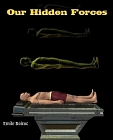
Rough Stone Monuments and Their Builders

Description
and Their Builders
Large Print
by
T. Eric Peet
The aim of this volume is to enable those who are interested in Stonehenge and other great stone monuments of England to learn something of the similar buildings which exist in different parts of the world, of the men who constructed them, and of the great archæological system of which they form a part.
Large print 17 point font.
**************
Excerpt:
It is hoped that to the archæologist it may be useful as a complete though brief sketch of our present knowledge of the megalithic monuments, and as a short treatment of the problems which arise in connection with them.
To British readers it is unnecessary to give any justification for the comparatively full treatment accorded to the monuments of Great Britain and Ireland. Malta and Sardinia may perhaps seem to occupy more than their due share of space, but the usurpation is justified by the magnificence and the intrinsic interest of their megalithic buildings. Being of singularly complicated types and remarkably well preserved they naturally tell us much more of their builders than do the simpler monuments of other larger and now more important countries. In these two islands, moreover, research has in the last few years been extremely active, and it is felt that the accounts here given of them will contain some material new even to the archæologist.
********************
To the south of Salisbury Plain, about two miles west of the small country town of Amesbury, lies the great stone circle of Stonehenge. For centuries it has been an object of wonder and admiration, and even to-day it is one of the sights of our country. Perhaps, however, few of those who have heard of Stonehenge or even of those who have visited it are aware that it is but a unit in a vast crowd of megalithic monuments which, in space, extends from the west of Europe to India, and, in time, covers possibly more than a thousand years.
What exactly is a megalithic monument? Strictly speaking, it is a building made of very large stones. This definition would, of course, include numbers of buildings of the present day and of the medieval and classical periods, while many of the Egyptian pyramids and temples would at once suggest themselves as excellent examples of this type of building. The archæologist, however, uses the term in a much more limited sense. He confines it to a series of tombs and buildings constructed in Western Asia, in North Africa, and in certain parts of Europe, towards the end of the neolithic period and during part of the copper and bronze ages which followed it.
The structures are usually, though not quite invariably, made of large blocks of unworked or slightly worked stone, and they conform to certain definite types. The best known of these types are as follows: Firstly, the menhir, which is a tall, rough pillar of stone with its base fixed into the earth. Secondly, the trilithon, which consists of a pair of tall stones set at a short distance apart supporting a third stone laid across the top. Thirdly, the dolmen, which is a single slab of stone supported by several others arranged in such a way as to enclose a space or chamber beneath it. Some English writers apply the term cromlech to such a structure, quite incorrectly. Both menhir and dolmen are Breton words, these two types of megalithic monument being particularly frequent in Brittany. Menhir is derived from the Breton men, a stone, and hir, long; similarly dolmen is from dol, a table, and men, a stone.
Some archæologists also apply the word dolmen to rectangular chambers roofed with more than one slab. We have carefully avoided this practice, always classing such chambers as corridor-tombs of an elementary type. Fourthly, we have the corridor-tomb (Ganggrab), which usually consists of a chamber entered by a gallery or corridor. In cases where the chamber is no wider than, and hence indistinguishable from the corridor, the tomb becomes a long rectangular gallery, and answers to the French allèe couverte in the strict sense. Fifthly, we come to the alignement, in which a series of menhirs is arranged in open lines on some definite system. We shall find a famous example of this at Morbihan in Brittany. Sixthly, there is the cromlech (from crom, curve, and lec'h, a stone), which consists of a number of menhirs arranged to enclose a space, circular, elliptical or, in rare cases, rectangular.
These are the chief types of megalithic monument, but there are others which, though clearly belonging to the same class of structure, show special forms and are more complicated. They are in many cases developments of one or more of the simple types, and will be treated specially in their proper places. Such monuments are the nuraghi of Sardinia and the 'temples' of Malta and Gozo.
232 pages - 7 x 8½ softcover
ISBN-10: 1610335783
ISBN-13: 9781610335782
















